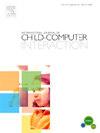基于设计的技术教育中的协同评估
Q1 Social Sciences
International Journal of Child-Computer Interaction
Pub Date : 2025-09-11
DOI:10.1016/j.ijcci.2025.100779
引用次数: 0
摘要
在以设计为基础的技术教育中,学生和教师之间的协作评估已被证明是促进学习的关键因素。以前的研究集中在形成性、诊断性和总结性的评估形式,仅限于学生的学习。然而,这些形式如何在基于设计的技术项目中表现出来,涉及教师和学生之间的协作评估,仍然是未知的。本研究通过对芬兰一所小学实施的桌游设计项目中的课堂互动进行考察,从纵向角度研究协作评估。参与者是两名经验丰富的工艺教师和六名学生,他们分成两个小组进行协作设计。视频数据按照宏观、中观和微观三个层次进行分析。结果是可视化的过程地毯,它显示了与口头和具体化的设计活动有关的评估。调查结果显示,在技术项目的不同阶段,学生和教师在评估方面的合作有所不同。同伴评估在项目的中点之后最为常见,而师生合作则集中在项目的开始和结束部分。形成性评估和总结性评估在学生之间的合作中普遍存在,而教师则主导诊断性评估活动。本文章由计算机程序翻译,如有差异,请以英文原文为准。
Collaborative assessment in design-based technology education
In design-based technology education, collaborative assessment between pupils and teachers has been shown to be a key element in facilitating learning. Previous studies have focused on formative, diagnostic, and summative forms of assessment limited to pupils' learning. However, it remains unknown how these forms are manifested in design-based technology projects that involve collaborative assessment between teachers and pupils. This study takes a longitudinal perspective on collaborative assessment by examining classroom interactions in a board game design project implemented in a Finnish primary school. The participants were two experienced craft teachers and six pupils who worked on collaborative designing in two small groups. The video data were analyzed by following a three-level approach, including macro, meso, and micro levels. The results were visualized with Process-Rugs, which showed assessment connected to verbal and embodied design activities. The findings revealed that pupils' and teachers' collaboration in assessment varied at different stages of the technology project. Peer assessment was most common after the project's midpoint, while teacher–pupil collaboration focused on the beginning and end parts. Formative and summative assessment were prevalent in collaboration between pupils, while teachers led the diagnostic assessment activities.
求助全文
通过发布文献求助,成功后即可免费获取论文全文。
去求助
来源期刊

International Journal of Child-Computer Interaction
Social Sciences-Education
CiteScore
7.20
自引率
0.00%
发文量
73
 求助内容:
求助内容: 应助结果提醒方式:
应助结果提醒方式:


